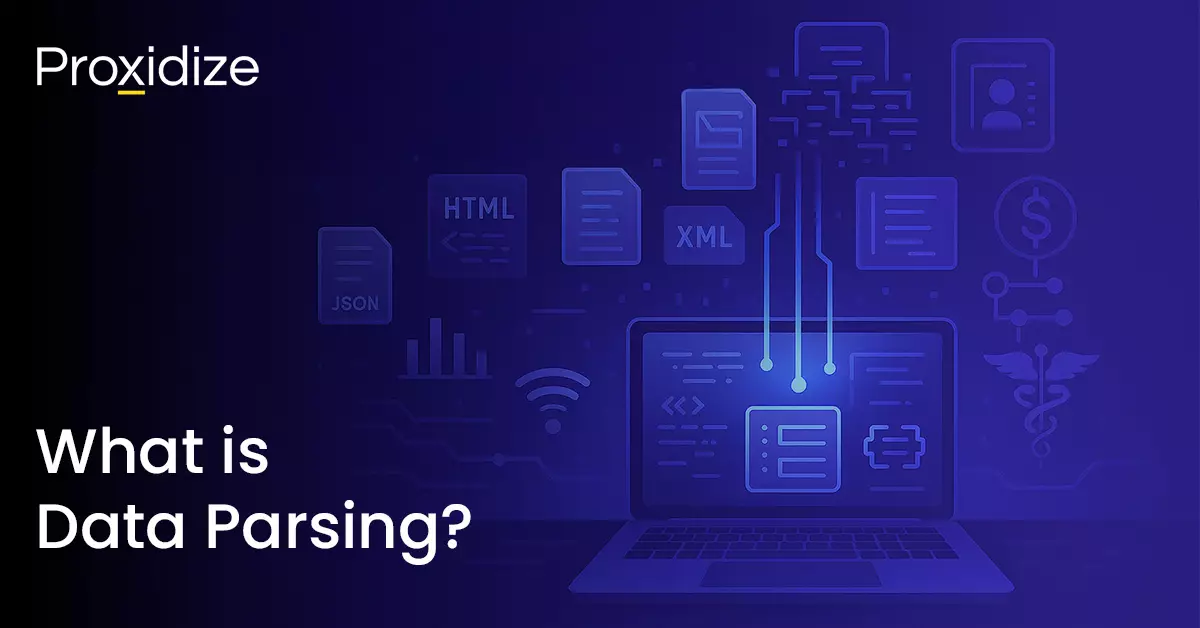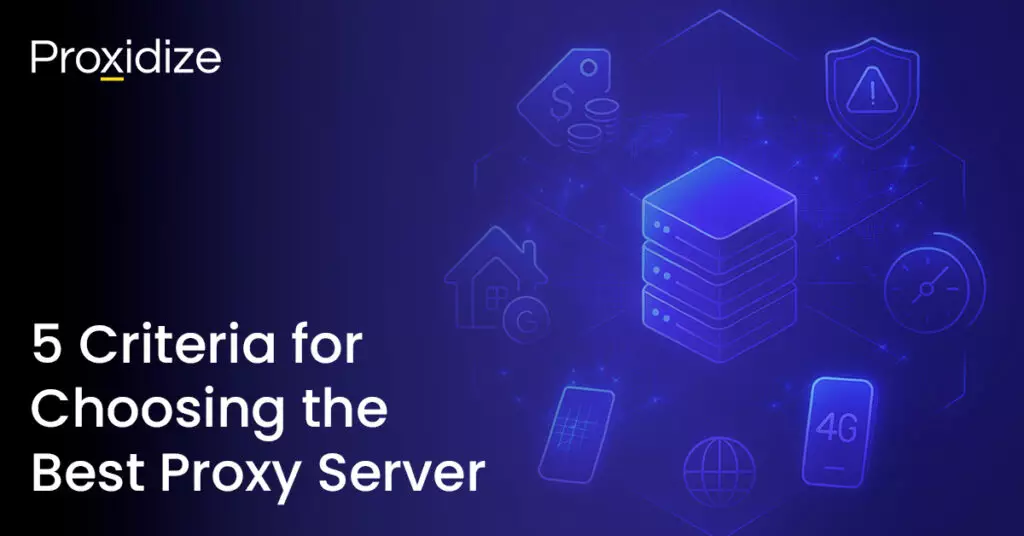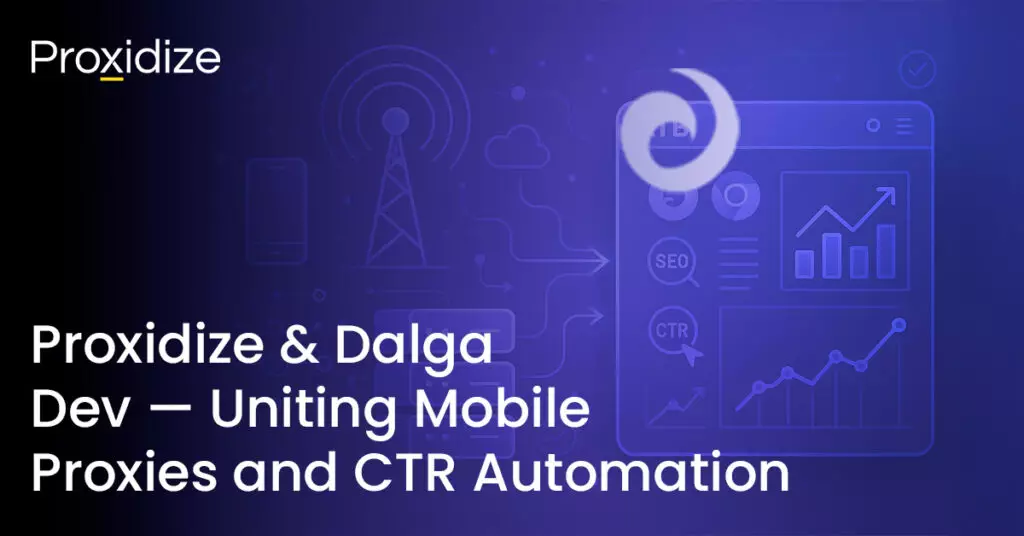Data parsing is an important step in data processing as it helps businesses manage and analyze a vast amount of data. According to Exploding Topics, there is an estimated 402.74 million terabytes of data created each day. While not every terabyte will be useful to you, it is safe to assume you handle at least a couple of hundred gigabytes. Mowing through all that data can be time-consuming, error-prone, and inefficient. That is, if all the data is formatted the same, which it usually is not. This is where data parsing comes in.
Data parsing is the process of extracting information from unstructured data sources and transforming it into a structured format. Text files and social media posts can be difficult to work with because of their unstructured nature, which is why using a data parser can transform that data into a more structured format. This article aims to explore what data parsing is, the various techniques surrounding it, some best practices, and how to decide between buying a data parser or building one yourself.
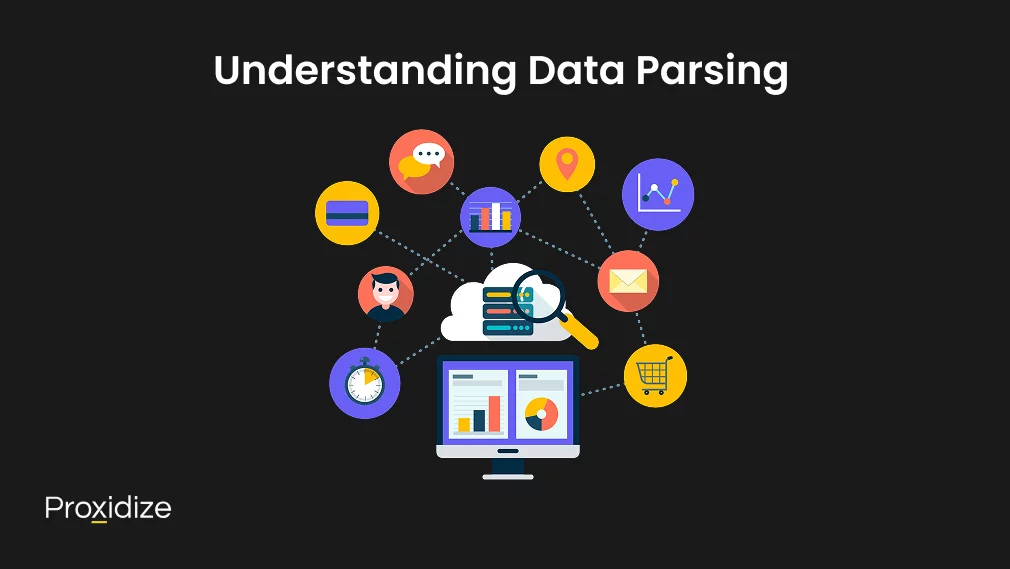
Understanding Data Parsing
Data parsing involves extracting helpful information from a specific data format such as CSV, XML, JSON, or HTML. This is typically done by using a data parser which is a software tool that reads and analyzes data in its original unstructured format and converts it into a more structured form.
There are many data parsers available such as BeautifulSoup, lxml, and csvkit.They are handy for analyzing large amounts of data in a fast and effective manner. Occasionally, you might need to create your own parser if you are dealing with interactive data, natural language processing, or a specific data format that does not have an existing parser. We will discuss the benefits of creating a parser vs using a preexisting one later on in this article.
To understand the benefits of using a data parser, consider this example: imagine you have an HTML document that you gathered from an e-commerce web page. A raw HTML file contains product titles within the document and other elements such as their attributes, CSS codes, and additional data. Once it is parsed, the file will only contain the extracted product titles, helping you read and interpret the information more easily.
HTML data: <li href=”/products/category/xbox-platform/xbox-360″ class=”css-dpki72 eyah4m91″>xbox-360</li>
Parsed data: “xbox-360”
Data Parsing Use Cases
Data parsing use cases exist throughout all industries. Businesses can use data parsing to get an understanding of the data being sent over emails, as it can extract and condense relevant information and replace manual labor.
With a parser, companies do not need to rely on search by keyword and opening each and every email individually as the parser will extract all relevant information in seconds. Recruiters utilize data parsing as a way to weed through all the resumes, only to receive the ones that mention the exact skills and experiences they are looking for.
Investors parse data to analyze all the financial information instantly, which becomes useful for the real-time market changes. Similarly, parsing can be used for market analysis to keep up with the ever-changing preferences of consumers, allowing businesses to catch up with the latest trends and plan accordingly.
Data parsing is helpful for everything from the financial industry, healthcare, legal, transportation, and logistics, to automatic data entry, customer onboarding, KYC automation, the list is endless, making the need to understand and utilize data parsing that much more prevalent.
How Does Data Parsing Work?
Data parsing involves breaking down large datasets into more manageable pieces. The smaller pieces can be analyzed or manipulated as seen fit by the company. This is done through a data parser which converts raw unstructured data into structured, readable formats that other programs can easily process. There are many different data parsers available, each capable of handling a specific format such as XML data parsers, JSON, or CSV parsers.
Parsers begin when the user enters the raw data, which it breaks down into smaller pieces based on the circumstances and patterns it has been programmed to follow. During this, the parser might perform additional tasks such as data validation or transformation to ensure that the data is in the correct format and is not missing any fields. It could change the data from one format to another such as changing a date from a string to a data object. Once that is complete, the data can be output in various formats depending on your needs.
One of the most effective tools for data parsing is an API for web scraping. Through this method, businesses can automate data extraction from many websites, making the parsing process efficient and scalable. With a web scraping API, parsing becomes a more user-friendly solution for handling specific data extraction needs.
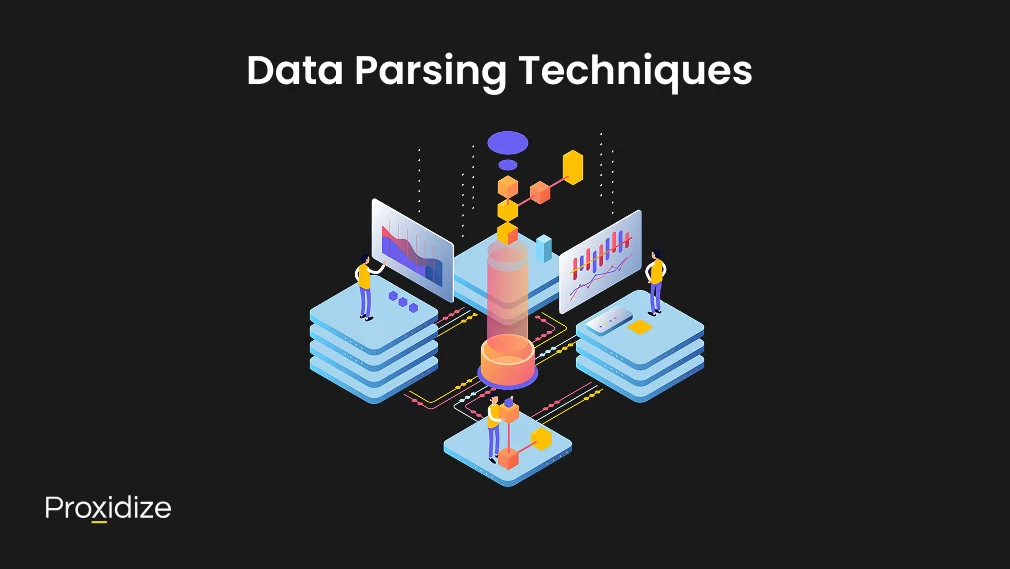
Data Parsing Techniques
In data parsing, there are many approaches you can take, primarily:
- Rules-based Approach: Suitable for structured documents like tax invoices or purchase orders. The rules set will help determine which template is used as a reference for the parser to extract data from a document.
- Learning-based Approach: Relies heavily on Machine Learning and Natural Language Processing (NLP). This is because the model is trained with a diverse set of unstructured documents, giving it the ability to easily recognize important fields and extract data from them.
Typically, a combination of both approaches is used to perform data parsing as it allows you to process any document with any kind of limit without trapping you to only one layout.
There are many other sub-types of data parsing including:
- Grammar-Driven Data Parsing: You define a set of rules to identify the structure of a piece of input text that can be defined in a file or part of your code.
- Data-Driven: Uses rule-based methods and language such as NLP with regular expressions (regex) used to identify and extract data based on recurring patterns.
- String: Involves breaking down a string of characters into smaller substrings to extract the relevant information. Often used in simple text parsing apps such as searching for a specific keyword in a document or extracting information from a URL.
- Regular Expression: A more advanced technique that involves the use of regular expressions to extract information from unstructured or semi-structured data sources. Regex is a sequence of characters that defines a search pattern and can be used to search for specific patterns of characters such as phone numbers or email addresses.
- XML, JSON, and HTML: Used for parsing the specific document format, breaking it down to its individual elements and attributes.
- Scripting Language: Involves using a scripting programming language to extract information from unstructured or semi-structured data. It requires writing custom scripts to analyze and extract the information which makes it more difficult for those who are not as tech savvy.
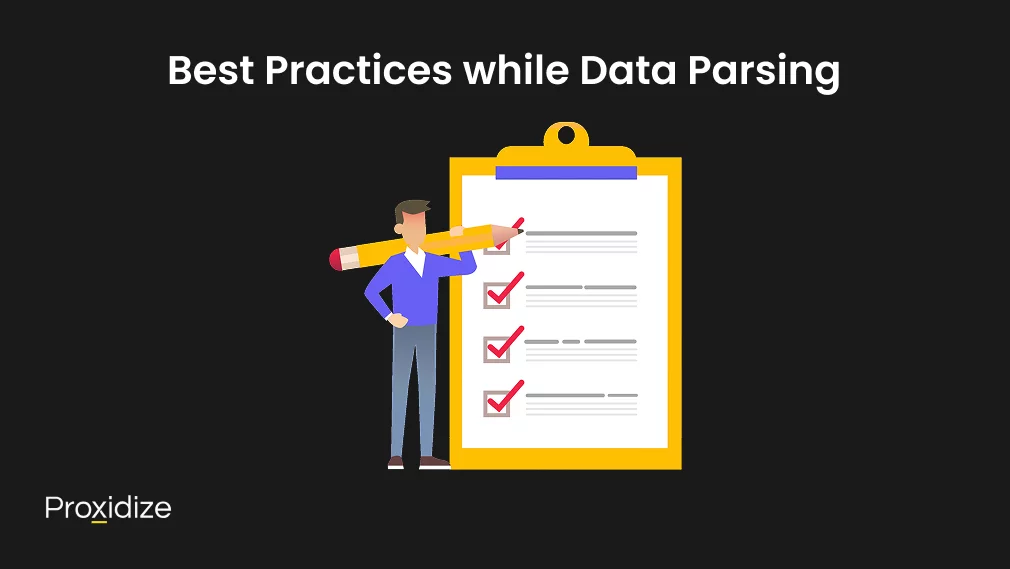
Best Practices while Data Parsing
After you identify the data format, select the appropriate data parser to handle the specific format. There are many tools available, from open-source to commercial parsers. Evaluating the tools based on performance, accuracy, compatibility, and ease of use is necessary before selecting one that just works. If possible, test the parser to make sure it accurately and efficiently extracts the data. Keep in mind that parsers can still be prone to errors due to inconsistencies in the data, data corruption, or incorrect formats. Handling these errors can avoid crashing the parser or system. Use exception handling to detect errors and respond appropriately.
Optimize the performance of your data parser by using caching mechanisms, multithreading, and reducing the number of I/O operations. Maintain flexibility by using modular designs, separating concerns, and configuring files for easy modifications. Finally, document the process to make sure it can be reproduced, maintained, and improved over time.
Choosing the right tool for data parsing can come down to the size of your business as well. For a small business with a smaller team and fewer resources, building a parser could impact the organization regarding development costs. If you choose to develop your own in-house parser, it can be time-consuming and difficult unless you have a team experienced in creating a data parser.
Medium-sized businesses may or may not require building their own parser. This depends entirely on the skillset of the IT team and whether allocating all or some members is worth it just for a scraper that can be purchased.
Larger organizations would typically have bigger IT teams and quality talent, where members of the team can work on building a custom parser. This would give them greater control over how their parser works and would cost less than purchasing one.
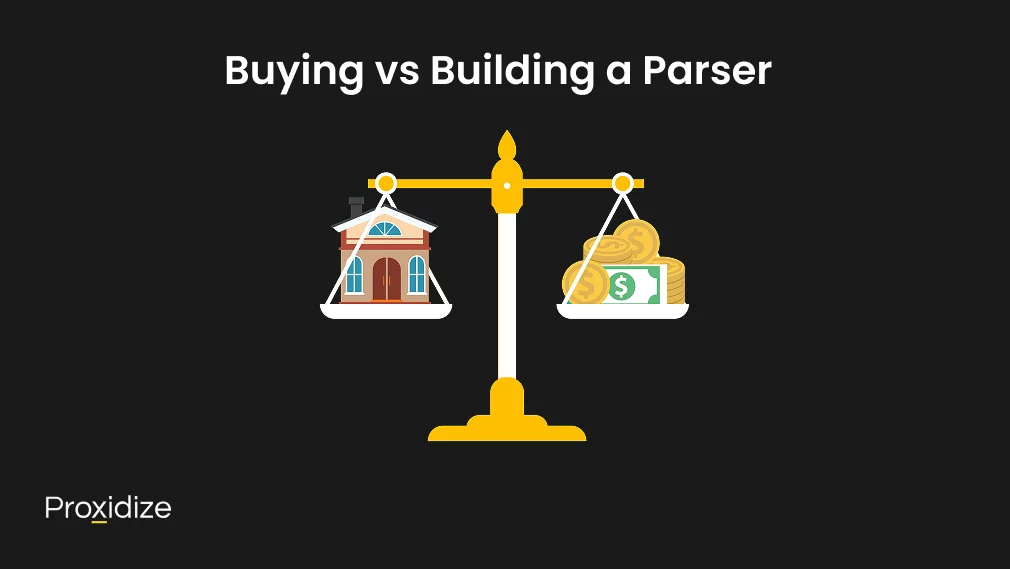
Building vs Buying a Data Parser
On the topic of building vs buying a scraper, let us explore this quandary further. Should you spend time and resources building a fully customizable tool for data parsing, or should you just find one available and save yourself the hassle?
Building a Data Parser
Some of the benefits of building your own parser include:
- It will be tailor-made for your exact needs. You will not need to fiddle around with it too much after it is built.
- Building your own scraper will be cheaper than buying one from a provider, especially if data parsing is a common task in your organization.
- You will be in control of what decisions need to be made when updating and maintaining it.
The downsides include:
- Unless you have a dedicated and skilled IT team, you will need to hire and train a team specifically for building and maintaining the parser.
- Many resources and expenses will be used to maintain the parser and ensure it is operational and error-free.
- You will need to work closely with the IT team to make sure every decision and alteration is to your exact specifications.
Buying a Data Parser
If it is not within your budget, time, or resources to build a parser, you can also buy one from the many providers available online. The benefits of doing so include:
- No need to spend any extra money on human resources as everything from maintenance to handling will be taken care of by the provider.
- Any issues will be solved faster as the provider will have extensive knowledge on data parsing and its relevant tools and should be able to fix the issue.
- There is a low chance the parser will crash or experience any issues as the provider will have tested it to ensure it is ready for production and will have contingencies in place for what might happen.
- Less time is spent tweaking the intricacies of your personal scraper and you can just get started instantly.
However, it also has its downsides, such as:
- The additional cost of scrapers, especially really powerful and customizable ones, will add to your budget.
- You might not have full control of everything. The risk of an outage from the server side will be unpredictable.
Conclusion
Data parsing is an important method of transforming raw, unstructured information into machine-readable formats that support accurate data analysis and informed decisions. Whether processing XML files, CSV files, PDF files, or markup language sources, parsing tools can help extract valuable insights while minimizing human error. Financial institutions, healthcare providers, and companies conducting market analysis rely on data parsing to convert vast amounts of log data into actionable insights.
Key Takeaways:
- Data parsing converts raw data into a usable format, enabling accurate data analysis and minimizing human error.
- Common data parsing techniques include string parsing, grammar-driven parsing, data-driven parsing, and advanced parsing techniques like AI-powered tools and statistical parsers.
- Parsing tools support a wide range of industries, from financial institutions processing feeds of stock prices to healthcare systems managing medical records and patient records.
- Choosing between building a dedicated parser or purchasing a commercial solution depends on available tech team resources, technical expertise, and specific parsing requirements.
- Reliable parsing tools help organizations extract actionable insights from XML documents, PDF files, schedules in CSV files, and other common data formats while ensuring accurate parsing and effective error checking.
Selecting the right parsing solution depends on the parsing requirements, available expertise, and long-term business needs. Choosing to build an in-house data parser will offer you the flexibility to apply custom parsing rules and handle sophisticated parsers, tailored to specific formats like XML parsing. Commercial tools and AI-powered data parsing solutions provide efficient parsing with advanced parsing techniques and error checking already in place. No matter which approach you take, a proper data parsing process allows organizations to streamline administrative tasks, reduce syntax errors, and optimize their data-driven parsing operations for more reliable, data-based decisions.


